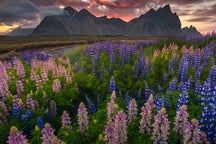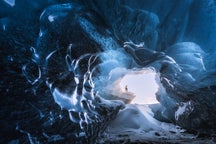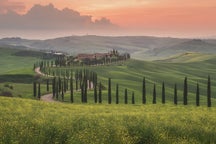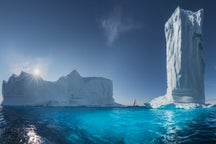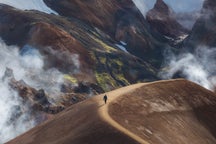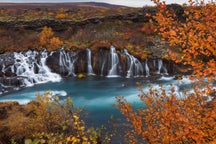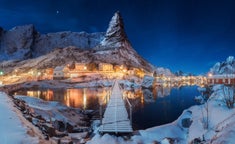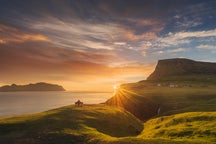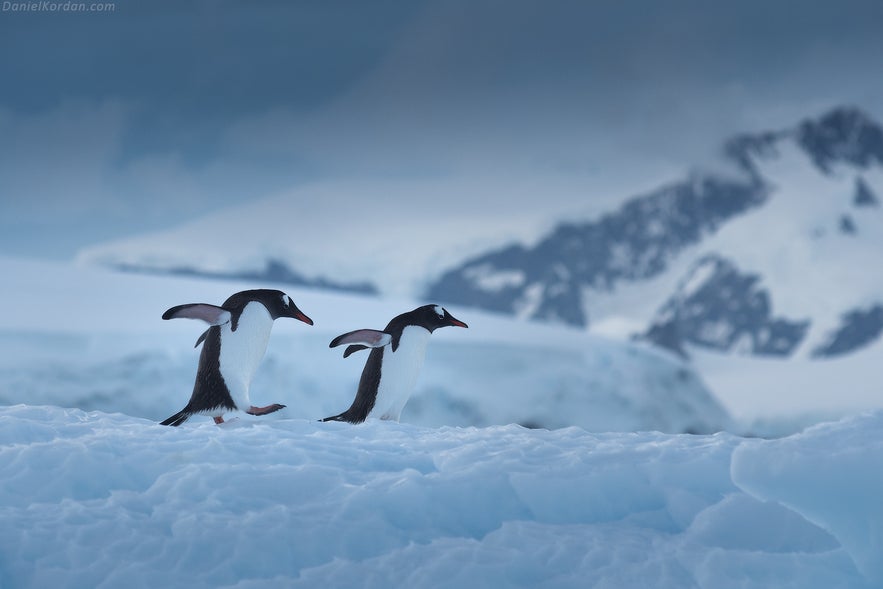
What animals can you photograph in Antarctica? Are there photography tours, workshops or cruises that will allow you to capture images of wildlife in the Antarctic? How can you take the best pictures of the continent’s penguins, seals and whales? Read ahead for the ultimate guide to wildlife photography in Antarctica.
- Discover The Ultimate Guide to Animals in Antarctica
- Learn these 25 Useful Tips to Quickly Improve your Landscape Photography
With freezing temperatures throughout the year, vicious and unpredictable storms and inhospitable landscapes, Antarctica is the only continent on Earth which our species has been unable to colonise. In spite of human civilisations blooming in baking deserts, impregnable jungles, distant mountain reaches and the icy shores of the Arctic, this southern landmass has proved itself too extreme, even for us.
 A seal hauls out in summer in Antarctica. Photo by: 'Daniel Kordan'.
A seal hauls out in summer in Antarctica. Photo by: 'Daniel Kordan'.
In fact, Antarctica has no terrestrial animals, and none have been introduced to the mainland. Rats and mice that accompanied voyagers on ships to all corners of the Earth have only managed to survive on a few sub-Antarctic islands; the same can be said for livestock.
When then, you might ask, is a trip to this beautiful yet desolate land considered one of the most rewarding and unforgettable trips for a wildlife photographer?
The answer is simple: Antarctica's waters. In spite of the hostile conditions of the landmass, the seas and shores are teeming with life throughout the summer, with thriving species perfectly adapted to the continent. Elephant seals engage in brutal fights for mating rights on the icy coast, Emperor penguins bumble around with fledging chicks wobbling behind them, and giant whales build up their fat stores by feasting on tonnes of krill a day.
Wildlife photographers delight in the fact that all of the subjects present are spectacular creatures that exhibit fascinating behaviours, most of which can be seen in very few places on Earth. That, however, is not the only appeal of wildlife photography here.
These animals simply cannot be captured in a more spectacular setting than Antarctica. The conditions that make it so inhospitable to human life are equally as pleasing to the eye. Towering mountain ranges of untouched snow, plains of gleaming sea ice and freezing crystals lingering in the air make the landscapes some of the most fantastical, otherworldly and unique on the planet.
Furthermore, Antarctica during the summer never gets dark; the axis of the Earth means that even at midnight, the sun will be in the sky. This not only provides bright conditions whenever you set out to shoot but allows you to better exhibit the patience required for wildlife photography.
- Check out these Articles on Wildlife Photography
Finally, due to their lack of exposure to humans, many of the animals of the Antarctic have no fear of photographers. While, of course, the space of the animals must be respected, most penguins and seals will have little interest in you or your camera equipment, allowing you to shoot them with ease.
Photographing the animals of the Antarctic promises to transform your portfolio into something incredibly unique, regardless of whether you are an aspiring amateur or seasoned professional. Not only that, but you will not doubt learn a wealth of skills that will hone your techniques to new levels.
Of course, it is natural to have a number of questions before embarking on this photography journey of a lifetime. Are there photography tours available tailored to finding the animals? What photography equipment should I bring, and what clothes are necessary for the conditions? Is the wildlife in Antarctica dangerous, and how can I ensure I don't hurt the animals? How do I even get to the Antarctic?
All of these questions and more will be answered in this ultimate guide to wildlife photography in Antarctica.
- See also: The Best Lenses for Wildlife Photography
What is the Best Way to Get to Antarctica for Wildlife Photography?
 Antarctica in summer can only be reached by ship commercially. Photo by: 'Daniel Kordan'.
Antarctica in summer can only be reached by ship commercially. Photo by: 'Daniel Kordan'.
Due to its isolation, extreme climate and lack of commercial airport, Antarctica is accessible to tourists only by ship, and only in summer.
Cruise liners are the most popular way to access the continent but are not at all tailored to wildlife photography. While some allow a few visits to land, most keep you onboard throughout, severely limiting your chance to locate and find animals.
You may get a few shots of petrels or albatross overhead, or some whales or dolphins breaching in the water, but the experience will be entirely luck-based. You’ll miss out on the more unique opportunities provided by this magnificent continent, such as the chance to shoot vast colonies of penguins or bull Elephant seals engaging in an epic wrestle for dominance.
By far the best way to build your portfolio with unbelievable shots, to hone your photography skills and to immerse yourself in the untouched wilderness of Antarctica is to take an Antarctic photography workshop.
Take, for example, this twelve-day expedition tailored to capturing the continent’s wildlife on film, available in 2020 and 2021. On this journey, all the details of your trip which make Antarctica so inaccessible to most travellers are sorted before your arrival, including your accommodation, ships, transfers, meals and guides. All you need to do is get flights to the town of Ushuaia in Southern Argentina, and the rest is sorted.
- Check out this Patagonia Summer Workshop
 The seascapes and landscapes of Antarctica in summer are unlike anything on Earth. Photo by: 'Daniel Kordan'.
The seascapes and landscapes of Antarctica in summer are unlike anything on Earth. Photo by: 'Daniel Kordan'.
On the topic of the guides, you will be led by the best in the world. Not only will you have an expedition team that intimately knows the landscapes of Antarctica and the best spots for locating its beautiful wildlife, but you’ll be led by award-winning photographer Daniel Kordan. Throughout the trip, he will provide lectures, seminars and other resources to ensure you take the very best photographs, and help you with your shots on site.
This tour is conducted on the Greg Mortimer, a brand-new ship designed for exploring the waters of the Antarctic. This top-of-the-range vessel not only has plentiful space for its guests but an art space dedicated to photographers to help them hone their images.
The expedition makes land multiple times and allows you to take many trips on the zodiac, providing you with countless opportunities to photograph a diverse range of animals, including penguins, albatross, seals, whales and dolphins.
- Check out this Interview with Daniel Kordan
What to Bring for Wildlife Photography in Antarctica
 A seal relaxes in the low light of the Antarctic sun in summer at night. Photo by: 'Daniel Kordan'.
A seal relaxes in the low light of the Antarctic sun in summer at night. Photo by: 'Daniel Kordan'.
Regardless of your reasons for visiting Antarctica, you will need to bring as much winter clothing as possible; this does not refer to your hats and scarves, but specialist gear designed to withstand this unforgiving climate.
Moving past the obvious and onto camera equipment, there are many accessories and items that can make your wildlife experience as rewarding as possible.
Beginning with lenses, a telephoto zoom lens is a near necessity for wildlife photography, allowing you to capture details of animals from a distance and maintain both your safety. This will prove particularly useful when shooting Elephant seals (which you won’t want to get too close to) and nesting birds you do not want to disturb.
 Telephoto lenses in Antarctica help you with wildlife photography. Photo by: 'Daniel Kordan'.
Telephoto lenses in Antarctica help you with wildlife photography. Photo by: 'Daniel Kordan'.
When photographing whales and dolphins, which can appear at the surface without warning and often remain there just moments, a telephoto zoom lens is less useful. A wide-angle lens can allow you to frame a beautiful backdrop with the ocean in the foreground, and you can simply wait for a whale or dolphin appear into it.
Photographing breaching whales and dolphins is best done with a camera that has a burst function, considering how quickly this phenomenon occurs. Such a function will also help you shoot the Antarctic’s seabirds as they dive for fish or hover over the surface with fluttering wings.
Due to the Midnight Sun season in Antarctica, and the fact you will only set out on expeditions in good weather, bringing any additional flash equipment is senseless. In fact, due to the burden of your thermal clothing and the rugged terrain of the land, you’ll want to take as little additional equipment as possible with you for each shoot. In many cases, this may even include forgoing a tripod.
- See also: Bright Ideas for Shooting in Daylight
 Even in summer, the weather in Antarctica can be extreme. Photo by: 'Daniel Kordan'.
Even in summer, the weather in Antarctica can be extreme. Photo by: 'Daniel Kordan'.
Perhaps the most essential photography equipment to bring specifically for capturing Antarctica’s wildlife is extra batteries or an external battery pack you can keep in your pocket. The cold will drain battery life incredibly quickly, even if you turn off all of your camera’s extra functions such as its automatic focus and LCD. The photographic opportunities in the Antarctic are too incredible for you to miss over something as simple as running out of charge.
When booking a photography workshop, you’ll be sent a list of recommended equipment, and are welcome to contact your provider with any questions about what you should bring before departure.
Photographing Birds in Antarctica
 Chinstrap penguins in Antarctica are territorial over their courting stones. Photo by: 'Daniel Kordan'.
Chinstrap penguins in Antarctica are territorial over their courting stones. Photo by: 'Daniel Kordan'.
Antarctica in summer is a haven for migratory birds, who arrive on the continent and its surrounding islands in the millions to lay and rear their eggs far from the terrestrial predators that plague all other lands. A total of 61 species, including petrels, terns, skuas, cormorants and even some species of duck and heron, can be found here every year, although the most iconic creatures on and around the mainland are the penguins and albatross.
Photographing Penguins in Antarctica
Penguins are the face of the Antarctic; if a film or documentary about the continent is not about the survival of explorers or climate change, it is likely about penguins. The March of the Penguins, Happy Feet and Surf’s Up all posture these birds as the protagonists of the Antarctic, and their role in the David Attenborough series Dynasties renewed interest in them across the world.
It is little wonder why. Their anthropomorphic bodies, the care they have for their chicks and their tendency to form lifelong partners make them seem as human as they are bird. Their behaviour, such as their clumsy walk, belly slides and mass huddles, are also objectively adorable.
Most wildlife photographers to Antarctica, therefore, consider taking some epic photographs of penguins as a priority. In fact, penguins are such a popular feature of the continent that we have dedicated an entire article to the best way to capture them on film. While said feature goes into much more depth about the different species of penguins in Antarctica and capturing them specifically, there are a few essential points about photographing them that we can cover here.
Firstly, the opportunities to photograph penguins in the water require a degree of skill. The only times they usually exhibit any surface activity of note is when they are being pursued by a predator, when they may breach to escape it, or when they are leaping from water to land. These incidents are hard to predict and time. Otherwise, they are hardly noticeable as they quickly come up for breath and difficult to shoot well due to their black feathers against the dark ocean.
On land, however, you can hardly find a better subject. The penguins of Antarctica have little fear of people; they are either slow-moving or stationary the vast majority of the time; they are impossible to miss with their colouration; they usually congregate in vast numbers; and, as noted, they are constantly exhibiting cute, photogenic behaviours.
 Two Gentoo Penguins clumsily walking over the snow of the Antarctic coast. Photo by: 'Daniel Kordan'.
Two Gentoo Penguins clumsily walking over the snow of the Antarctic coast. Photo by: 'Daniel Kordan'.
With all wildlife photography, you should approach the animals slowly and keep a distance. Regulations in the Antarctic dictate that you should not get within five metres of penguins. Rely on your lenses to get up intimate shots of their colourful, expressive faces and their young.
While penguins are, as noted, unafraid of photographers, they may be uncomfortable if you get too close due to your size; the energy they have to spend moving away from you could be much better spent warming up or hunting, so be respectful. As such, if they move further than five metres from you, do not pursue them.
It is also important to refrain from making sudden movements or loud noises, as if you startle one bird, you could startle the whole colony.
Note that the five-metre rule ceases to apply if penguins approach you; many, particularly chicks, will be curious and want to investigate you and your equipment. It is still forbidden to touch them, however.
- Check out this Complete Guide to Photographing Puffins in Iceland
Photographing Albatross and Other Birds
While the most iconic animals of this tour are undoubtedly the penguins and marine mammals, one should not turn their nose up to shooting the other birds of the Antarctic, most notably the albatross. With the largest wingspan in the animal kingdom, reaching nearly four metres across, albatross are spectacular creatures that exemplify the giantism that occurs in these southern reaches.
Seabirds will be the first animals you have the opportunity to shoot as you make you sea voyage towards the Antarctic. As they fly steadily overhead and your boat rocks in the dramatic waves of the Southern Seas, they will prove excellent subjects to hone your skills with.
While the chance to capture the mighty albatross is the most appealing, Arctic terns are also beautiful creatures with their streamlined bodies and painted faces, Storm petrels are delicate and dainty, while cormorants are large and have an air of the prehistoric.
 Gulls are aggressive seabirds in Antarctica, preying on penguin chicks. Photo by: 'Daniel Kordan'.
Gulls are aggressive seabirds in Antarctica, preying on penguin chicks. Photo by: 'Daniel Kordan'.
Though shooting these creatures on from your ship allows you to begin your wildlife photography as soon as your journey starts, you’ll have plenty of better opportunities once you reach Antarctica.
Photographing seabirds from a zodiac, for example, can often produce excellent results. Your low angle will allow you to capture birds resting on the water against the backdrop of snowy mountains or the rocky shores.
More skilled photographers may also be able to catch shots of Antarctica’s birds exhibiting their unique feeding behaviours from this vantage point; many make dramatic dives into the ocean to reach fish beneath the waves, while other flutter above the surface to pick planktonic crustaceans off the top.
As you are travelling during the summer, many of these birds will be nesting on the Antarctic islands and peninsulas, largely in relatively open areas due to the lack of predators on land. Sometimes these nesting colonies can be enormous. If coming in December or January, as most visitors do, most of the eggs will not have hatched yet.
When photographing seabirds on land, regardless of whether it is an individual or a colony, you must ensure you stay far from the nests. Not only could you accidentally trample on the eggs, but you could frighten the parents away and cause the offspring to freeze before it's even born. Furthermore, many seabirds are very defensive over their eggs, particularly South Polar Skuas, which will divebomb the heads of any they see as a threat.
As such, a telephoto zoom lens is essential in this kind of photography, and this may be one of the few cases when bringing a tripod on your expedition may be worth the extra burden.
Photographing Whales and Dolphins in Antarctica
Whales, dolphins and porpoises, known together as cetaceans, are fantastic subjects for wildlife photographers. For some, such as Blue Whales, it is their scale and rarity that make images of them so prized; for others, such as Humpback Whales, it is the awe-inspiring breaches they make from the depths of the ocean; and for many more, such as Hourglass Dolphins, it is their gregarious personalities and playful behaviour.
Photographing cetaceans is also a testament to a wildlife photographer’s skill. Their elusive behaviour beneath the water and often only momentary appearances at the surface makes snapping an image of one a challenging task even for the most practised. To do so, however, provides not just a stunning image but a sense of great fulfilment.
As noted, a burst function on your camera will help enormously in capturing the most dramatic surface behaviour of these animals, and a wide-angle lens will help incorporate them into the surrounding landscapes. A zoom function can be useful for capturing an animal that is resting at the surface or a pod of dolphins that are regularly breaching but can be difficult to operate if the boat is particularly rocky. In Antarctic seas, this is often the case.
 Great whales such as Humpbacks migrate to Antarctica in summer. Photo by: 'Daniel Kordan'.
Great whales such as Humpbacks migrate to Antarctica in summer. Photo by: 'Daniel Kordan'.
On the aforementioned photo workshops, you will take several trips out on a zodiac, which, if you are lucky, can result in some spectacular shots due to your lower angle and the chance to get closer to the animals. While your team of Antarctic experts will never operate the boat in a way that disturbs them, many cetacean species are curious and may come to you for a close-up.
Whales, dolphins and porpoises can be photographed in all oceans around the world, but the Antarctic Ocean in summer is particularly notable as a feeding ground for many of the greater creatures. Blue, Fin and Sei Whales, the three largest animals on Earth, all congregate here, and can even be seen in loose groups of many giant individuals, which occurs in few other places.
Furthermore, the largest dolphin species, the mighty Orca, is a common sight in the Antarctic, due to the wealth of prey here. The chance to capture such a magnificent, powerful creature from a zodiac is one that every aspiring wildlife photographer should grasp with both hands. Due to their enormous dorsal fins, scale of up to ten metres long, tendency to travel in pods and dramatic surface behaviours, they are some of the world’s best animal subjects should you be lucky enough to stumble upon them.
Finally, Antarctica boasts dolphin species that exist nowhere else on Earth, such as the stunningly coloured and notably acrobatic Hourglass dolphin.
Photographing Seals in Antarctica
 Six species of seal can be found in Antarctica year round. Photo by: 'Daniel Kordan'.
Six species of seal can be found in Antarctica year round. Photo by: 'Daniel Kordan'.
Like with penguins, there are many species of seal that rest, play and mate on the shores of Antarctica. In terms of how to behave when photographing them as subjects, however, they fall into two categories; those that are Elephant seals, and those that are not Elephant seals.
Southern Elephant seals are the world’s largest pinniped. Males can grow to just shy of six metres long, and up to four metric tonnes - twice the weight of a hippo. These bulls are best known for their inflated snouts, for dwarfing the females they share colonies with, and for the bloody battles they engage in for mating rights.
All of these qualities make them a wildlife photographer’s dream. Their scale, dramatic behaviour, vast colonies and the beautiful settings they congregate in make them some of the world’s most photogenic creatures. When dealing with such megafauna in their own environment, however, it is essential to be fully aware of what you are dealing with.
Bull Elephant seals seeking to mate, as they do during summer in the Antarctic, are at their most territorial and aggressive. While this aggression is largely directed to smaller bulls trying to sneak up on their turf (as well as the poor female elephant seals who are hapless to their advances), it is not unheard of for them to also exhibit such behaviour towards people.
Incidents of Elephant seal violence almost exclusively occur when human and elephant seal populations overlap, which, of course, does not happen on Antarctica. Otherwise, it happens when a human exhibits threatening behaviour, such as moving too close, getting between a male and the females, or making loud noises and sudden movements.
There have, however, been no recorded deaths or serious injuries to people from Elephant seals in the wild. Usually, they exhibit a display of dominance before attacking, such as trumpeting and raising their body on their flippers. They do charge if the threat persists, but as soon as it flees, usually stop their pursuit. This charge, however, is done blindly, and baby Elephant Seals - and other animals - can easily be crushed.
Even so, they are enormous, aggressive predators that should be treated with appropriate respect. Keep a distance, use the zoom function on your camera liberally, maintain a close eye for changes in behaviour, and always listen to your guides.
Interestingly, another seal species in Antarctica has been responsible for several injuries and at least one recorded death: the Leopard seal. These may, in fact, be one of the few animals that will actively hunt humans, as they have exhibited stalking behaviour before attacking.
 Leopard seals are second to orcas as the greatest hunters in the Antarctic. Photo by: 'Daniel Kordan'.
Leopard seals are second to orcas as the greatest hunters in the Antarctic. Photo by: 'Daniel Kordan'.
Leopard seals, however, tend to haul out on ice flows and ice sheets; most photography workshops focus more on exploring the landmass, so you are unlikely to encounter this species. Far more common is the adorable Weddell seal, which makes land further south than any other mammal.
When photographing colonies of Weddell seal, you should follow similar rules to photographing Elephant seals, but can do so with slightly less caution due to their much less aggressive nature. Regardless, all seals are wild animals, can weigh over half a tonne, and have a nasty bite, so do not approach them too closely, or if they are exhibiting defensive behaviours.
Challenges With Wildlife Photography in Antarctica
Trips to Antarctica are only conducted in the summer months, where the conditions are dramatically less extreme than the winters, which are defined by weeks-long blizzards and inconceivably low temperatures. Even so, it remains one of the most extreme places on Earth, and as such, all journeys to Antarctica have risks of certain experiences being impossible by changes to the weather.
On the photo tours mentioned, this may mean you cannot make a landing on the coast on the day you planned to photograph certain animals. While unfortunate, no addition to your portfolio is worth risking your life for in such an unpredictable and extreme place. The time aboard your vessel can be spent working on your other photos, learning techniques and tricks from your photo guides, or else shooting the continent from the deck of your ship.
 Post-producton techniques can help your refine pictures of the wildlife of Antarctica. Photo by: 'Daniel Kordan'.
Post-producton techniques can help your refine pictures of the wildlife of Antarctica. Photo by: 'Daniel Kordan'.
It is also worth noting that, as with all wildlife photography, luck is a factor. You may arrive at a location renowned for its animal populations, and they are simply not there. While Antarctica has an abundance of penguins, seals, whales, dolphins and seabirds, their movements and patterns do not always work in accordance with a photographer’s desires, so ensure you have realistic expectations each day.
Regardless of these challenges, wildlife photography in Antarctica is one of the most thrilling, life-changing and rewarding opportunities available to novice and professional shutterbugs alike. With enough preparation, patience and a drop of luck, the incredible animals of the world’s most remote and spectacular continent will become the featured images in your portfolio.
Capture the spectacular wildlife of Antarctica on this incredible fly/sail photography workshop in 2020 with Daniel Kordan!





